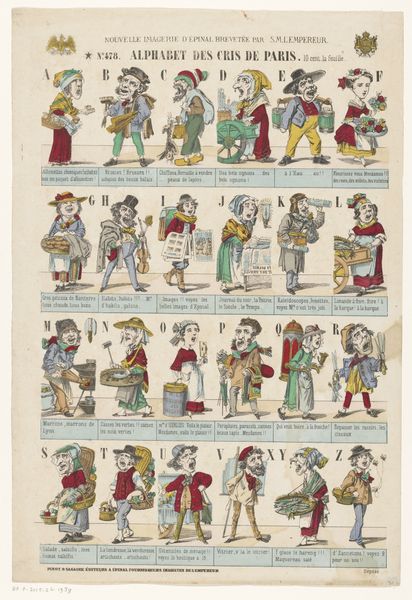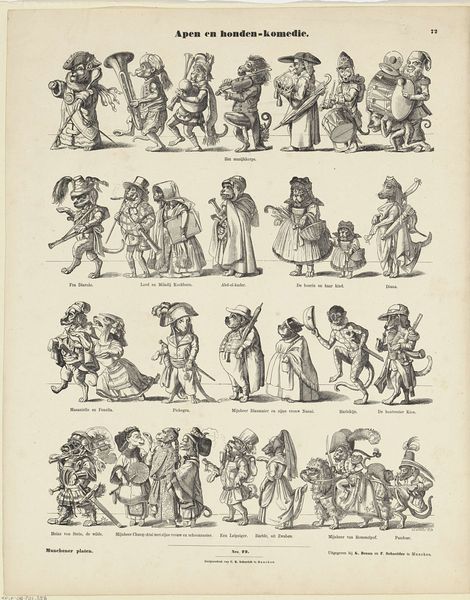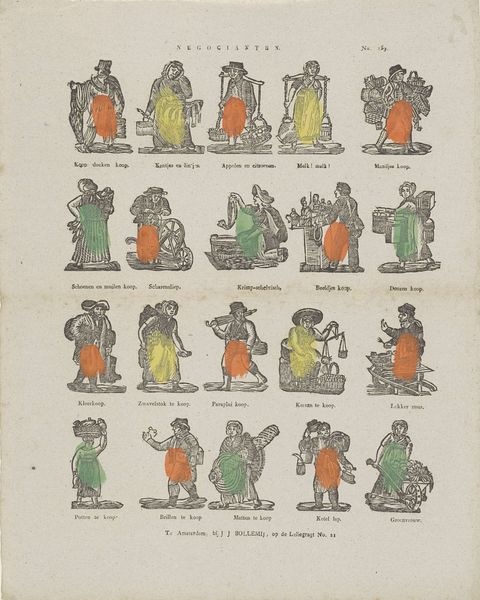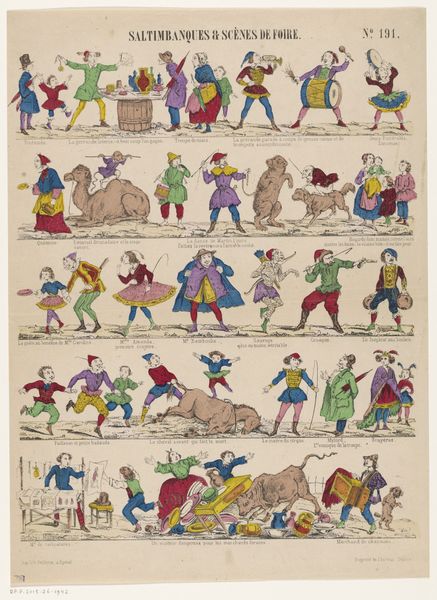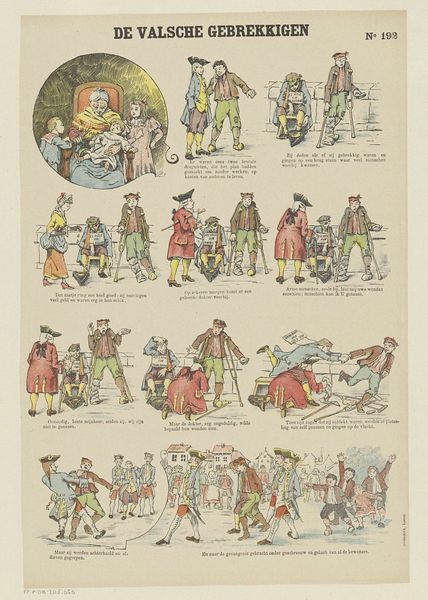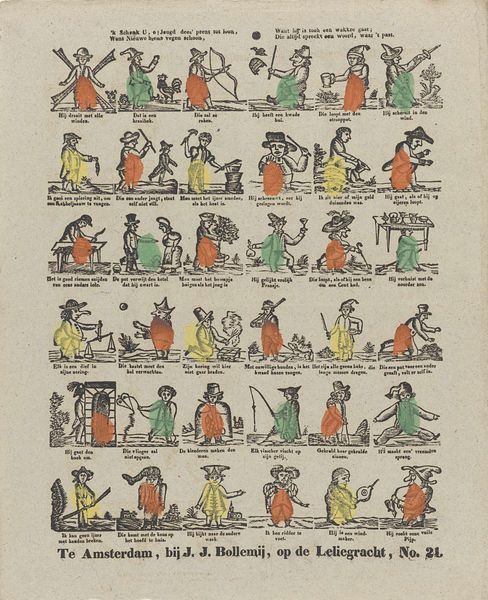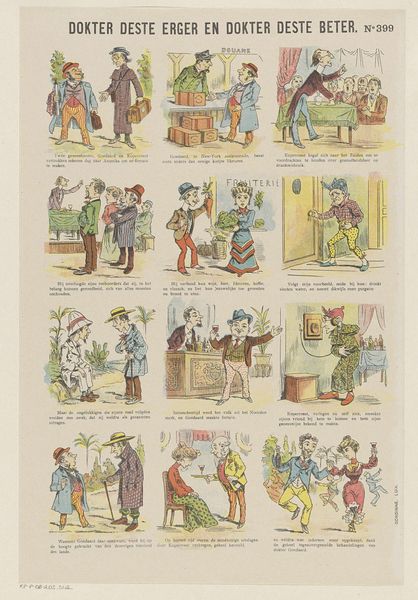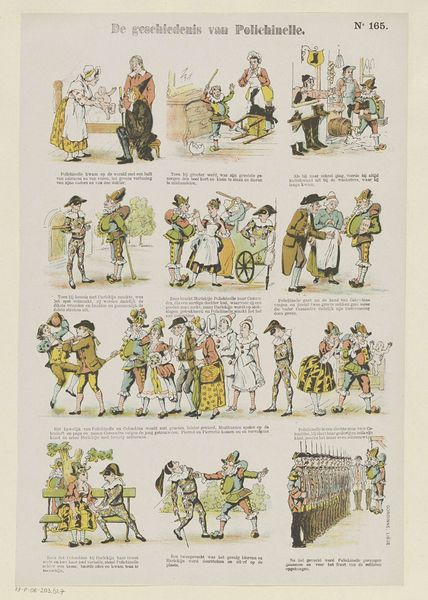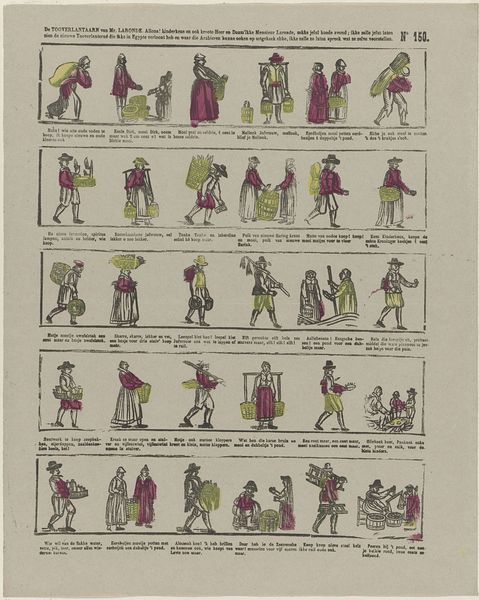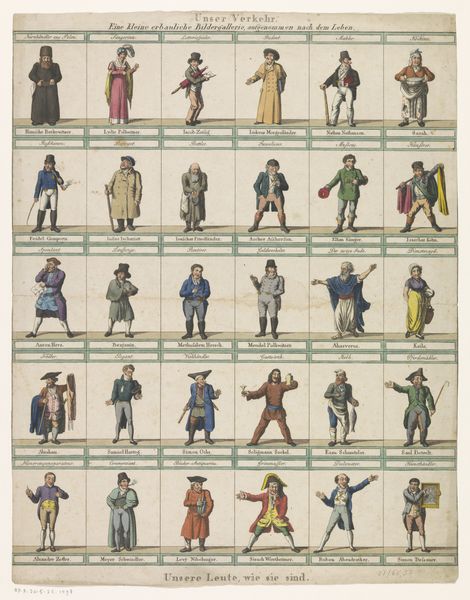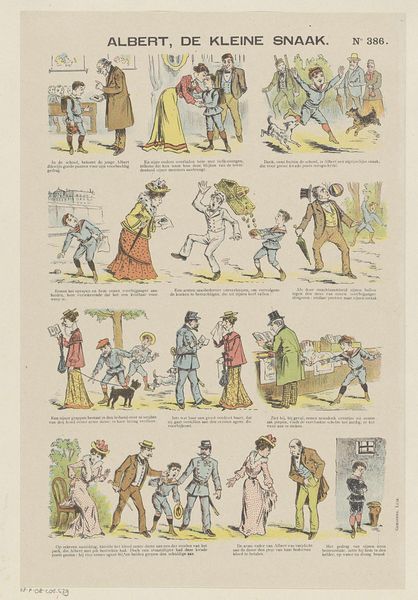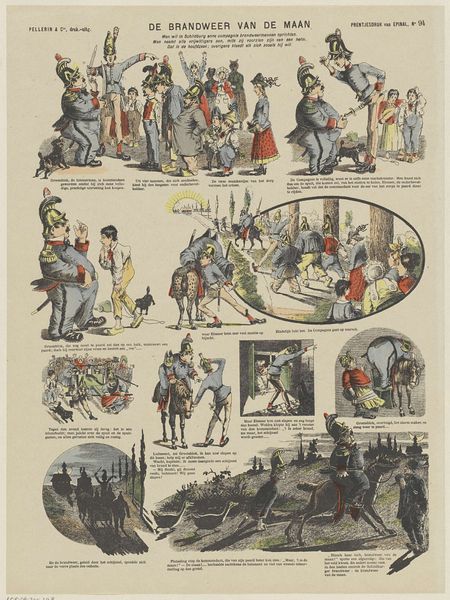
lithograph, print
#
lithograph
# print
#
dog
#
figuration
#
genre-painting
Dimensions: height 440 mm, width 351 mm
Copyright: Rijks Museum: Open Domain
Editor: "Honden-komedie," or Dog Comedy, a lithograph print created in 1854. The artist is E. Ille. It's just, well, very odd. I’m struck by how these anthropomorphic dogs, all dressed in such elaborate costumes, sort of act out human society. What is the social commentary that the artist might be getting at? Curator: Exactly! The title itself tells us this is a comedy, so it intends to use laughter and perhaps even ridicule as tools. Consider that genre painting often reflected societal norms and anxieties. By depicting dogs in human roles, Ille satirizes the behaviors and power dynamics within different social classes of the 19th century. Notice the detailed costumes, like "Wijnh. de Tjijger" with his gun, or "Otello de Doodsmoer," hinting at characters and storylines circulating through theater at the time, reaching a wide audience. The very act of ascribing human characteristics to animals highlights the follies and vanities of human behavior, almost like a distorted mirror. What does it suggest when we see animals mimicking elite culture? Editor: So, it’s a commentary on class and societal roles using satire. I see that. But how did audiences react to such overt social commentary at the time? Curator: That's a key question. Lithographs like these were widely distributed, making them accessible to a broad audience, from the educated to the working class. This allowed for cultural ideas and social critiques to circulate. The reactions would likely have varied. Some would have found it humorous and insightful, while others perhaps saw it as disrespectful or even subversive. Think of it as the political cartoons of its day, sparking conversations and shaping public opinion in the growing age of mass media. Did this sort of imagery shift perceptions about status and social hierarchy, and if so, how? Editor: I see the role this print played in society back then. I hadn't thought about it as a form of social commentary that many people would see. Curator: Indeed, viewing it this way sheds light on the artwork as more than just a funny image, and emphasizes the artist’s commentary of society and how its audience played an important role.
Comments
No comments
Be the first to comment and join the conversation on the ultimate creative platform.
